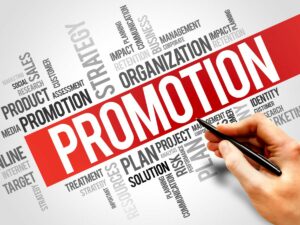Feeling overwhelmed by the intricacies of launching a hair product line? The challenges of market research, product formulation, and establishing a brand can be daunting. However, achieving success is within reach if businesses have a well-planned guide.
This comprehensive guide is designed to offer a clear, step-by-step blueprint for tackling these often overwhelming challenges. We will offer insights and tips to enrich the understanding of the industry.
So continue reading, as we delve into the 9 essential steps that will make the task of launching a successful hair product line far less daunting and much more manageable.
1. Market Research and Ideation
Before diving into the world of hair care products, solid groundwork in market research and ideation is indispensable. Below are key areas that deserve attention and planning.
Understanding the Target Market
Knowing who the target audience is proves to be essential. Detailed research can help pinpoint demographic details like age, gender, and even specific hair types. For this, consider leveraging various research tools such as online surveys, face-to-face interviews, and in-depth market reports. Gathering this information will not only identify potential customers but also help cater to their specific hair care needs more effectively.
Analyzing Competitors
According A88 Lab, in a saturated market, understanding what competitors are doing right — and wrong — can offer invaluable insights. Take a closer look at competing brands, assess their product range, pricing strategy, and marketing techniques. This process provides a clearer picture of what the market is responding to and where there might be room to offer something different or better.
Identifying Gaps in the Market
Once equipped with details about the target market and competitors, focus shifts to the gaps present in the market. Are there unmet needs? Perhaps there are product types that have not been fully explored, or maybe there’s a significant demand for natural or organic products. Identifying these gaps presents a unique opportunity to set the new hair product line apart from the competition.
Trend Analysis
Another important aspect is staying abreast of current market trends. Look into what’s hot in the world of hair care, from ingredients to application techniques. Industry reports, attending trade shows, or even keeping an eye on beauty bloggers can offer a wealth of information. Aligning the product line with these trends ensures that it remains relevant and sought-after for the long term.

2. Developing Your Product Line
With market research completed, it’s time to focus on turning the idea into a tangible product. Here’s how:
Product Formulation
Creating the ideal product goes far beyond mixing ingredients. Collaboration with knowledgeable professionals like chemists and hair care experts is crucial. The aim is to develop a formula that is not just unique but also effective and safe. Factors such as active ingredients, texture, and fragrance all need to be meticulously thought out.

Product Testing
Before the product hits the market, ensuring its safety and efficacy is paramount. At Zeralabs, our team conducts multiple rounds of tests, both in the lab and through consumer trials. Doing so verifies the product’s safety for public use, and consumer trials offer valuable feedback on the product’s real-world performance.
Packaging and Presentation
Packaging serves multiple purposes. Aside from being functional and preserving the quality of the product, it also plays a pivotal role in attracting customers. Choose packaging that reflects the essence of the brand — stylish yet functional, luxurious yet approachable. Remember, packaging often serves as the first point of contact between the product and potential buyers.
Cost Analysis
Understanding the financial aspects is crucial for any business venture. It’s essential to calculate the costs involved in the entire lifecycle of the product, from formulation and production to marketing and distribution. Being aware of these costs upfront helps in setting a realistic budget and pricing strategy, thereby ensuring profitability in the long run.
3. Branding and Design
Once there’s a solid product to offer, attention must shift to branding and design, crucial elements that can make or break the product’s success. Here are some key considerations in this sphere:
Creating a Brand Identity
A strong brand identity creates a lasting impression and offers a competitive edge. To develop this identity, elements like logos, color schemes, and brand messaging need to be carefully designed. Work with skilled designers and copywriters to create visual and textual elements that reflect the ethos and values of the hair product line. The goal is to establish a cohesive look and feel that resonates with the target market.
Labeling and Logo Design
The importance of effective labeling and a captivating logo cannot be overstated. These are usually the first things potential customers see. In designing these elements, ensure they align with the overall brand identity. Information on the label should be easy to read and comprehend, while the logo should be memorable yet simple.
Designing a User-Friendly Website
In today’s digital age, a well-designed website serves as the virtual storefront for any brand. Here, potential customers can browse products, read reviews, and make purchases. Employ professional web designers and developers to ensure the site is visually appealing, user-friendly, and mobile-responsive. The website should also be SEO-optimized to rank well in search engine results.
Packaging Design
Packaging is more than a container; it’s a form of communication. The materials used, the ease of use, and even the typography contribute to the customer’s overall experience. Align the packaging design with the brand’s image and values. It should not only attract attention but also provide necessary information and functionality.

4. Licensing, Regulations, and Compliance
Navigating the maze of licensing, regulations, and compliance is not optional but mandatory. Here are some aspects that can not be overlooked:
Product Safety and Regulation
Before any product reaches the consumer, it must meet certain safety and regulatory standards. For instance, engage experts to ensure that formulations are compliant with federal or international regulations. Non-compliance can lead to legal issues and tarnish brand reputation, so due diligence is a must.
Intellectual Property Protection
To safeguard the unique aspects of the hair product line, consider filing for intellectual property rights like patents or trademarks. Legal experts can guide through the intricacies of protecting brand assets. Taking these steps can shield against unauthorized use or duplication of product formulations, logos, or other proprietary information.
Ethical Considerations
According to Grand Canyon University, social responsibility can also serve as a brand differentiator. Whether it’s sourcing sustainable ingredients, avoiding animal testing, or supporting charitable causes, these efforts can be integrated into the brand’s ethos. Always ensure that the operations align with any advertised ethical practices to maintain trust and integrity.
Compliance Documentation
Maintaining thorough records of compliance documentation can prove invaluable, especially during audits or if questions of product safety arise. This includes testing results, certificates, and relevant correspondence with regulatory bodies. Effective documentation ensures that all regulatory requirements have been met and provides a paper trail for verification.

5. Setting Up a Business Plan
The blueprint for success in any venture is a well-crafted business plan. Below are the essentials to keep in mind while laying out the roadmap for launching a new hair product line.
Financial Projections
A key aspect of any business plan is a comprehensive financial projection. This should include expected revenue streams, estimated costs, and profitability margins. Tools like spreadsheets or specialized business planning software can help model different scenarios and outcomes. These projections will not only guide internal decision-making but are often required when seeking external investment or loans.
Market Entry Strategy
Deciding on a market entry strategy is crucial for setting the tone of the venture. Will the product be launched in a single market or multiple markets simultaneously? Will it be a slow rollout or a full-scale launch? This section should outline the strategy, drawing on the insights gained from market research and competitor analysis.
Marketing and Sales Plan
No product can succeed without a robust marketing and sales plan. This should encompass everything from the channels used for marketing (digital, print, social media) to the sales approach (direct-to-consumer, wholesale, retail). Clearly lay out a calendar of marketing activities, including launch events, promotional campaigns, and seasonal sales.
Risk Analysis
Every venture comes with its set of risks. Acknowledge these risks in the business plan and provide a contingency strategy for each. Whether it’s supply chain disruptions or the emergence of a new competitor, being prepared with actionable plans can help navigate through challenges.

6. Manufacturing and Production
With a business plan in place, the next stage is to bring the product to life. Here are some of the indispensable considerations in manufacturing and production.

Choosing a Manufacturing Partner
Finding the right manufacturing partner can have a significant impact on product quality and the overall supply chain. Consider multiple factors like manufacturing capabilities, quality control processes, and the lead times they offer. At Zeralabs, businesses can be sure that we comply with all regulatory and safety standards.
Raw Material Sourcing
The quality of raw materials directly affects the final product. Whether it’s organic oils, specialty chemicals, or even packaging materials, ensure that all raw materials are sourced from reputable suppliers. Establishing strong vendor relationships can secure better prices and ensure a consistent quality.
Quality Control Measures
It’s critical to have robust quality control measures in place throughout the production process. This ensures that every batch of products meets the established quality standards. Engage experts to help set up these protocols, including random sampling, product testing, and inspections.
Logistics and Supply Chain Management
Once the product is ready, the focus shifts to storing and distributing it efficiently. Logistics and supply chain management cover everything from warehousing options to selecting shipping partners. Having a streamlined logistics process can result in cost savings and faster delivery times, enhancing customer satisfaction.
7. Marketing and Promotion
After setting up the business plan and taking care of manufacturing, the next big step is marketing and promotion. The key elements to consider for effectively marketing a hair product line are outlined below:
Advertising Channels
In an age where advertising platforms are plentiful, choosing the right channels is crucial for reaching the target market. Whether it’s digital marketing through social media, traditional print advertising, or influencer partnerships, each channel has its own set of benefits and limitations. The trick is to mix and match these channels based on the market research and target demographics.
Content Marketing
Creating valuable and relevant content can significantly boost brand recognition and customer engagement. This could be in the form of how-to guides, product usage videos, or blog posts discussing various hair care tips. Content marketing not only provides useful information to potential customers but also improves search engine rankings, making the brand more visible online.
Promotional Strategies
Seasonal promotions, launch discounts, or loyalty programs can drive sales and attract new customers. It’s important to strategize these promotions carefully, calculating their financial viability and impact on brand image. Furthermore, promotion strategies should be adjusted based on analytics and customer feedback for maximum effectiveness.

8. Sales and Distribution
Once the products are ready and the word is out, the focus shifts to sales and distribution. Here are essential points to ponder.
Retail Partnerships
For products to reach consumers, establishing strong retail partnerships is crucial. This could mean being stocked in department stores, beauty shops, or entering into partnerships with online marketplaces. It’s vital to research and negotiate terms carefully, balancing the brand’s interest with the retailer’s expectations.
E-Commerce Strategy
In a world increasingly leaning towards digital, having a strong e-commerce strategy can significantly boost sales. This involves not just a well-designed web store but also the logistics and customer service that go with it. Deciding on aspects like shipping policies, return procedures, and customer support channels is as important as the website’s look and feel.
Inventory Management
Effective inventory management ensures that products are readily available when consumers want to make a purchase but doesn’t burden the business with excess stock. Adopting modern inventory management software can automate much of this process, making it easier to monitor stock levels and predict future inventory needs.
Global Expansion
If the brand proves to be successful in its initial market, it may be worth considering expanding into new geographic areas. This involves a whole new set of considerations such as international shipping, currency conversion, and compliance with local laws and regulations.

9. Launching Your Product Line
The culmination of all the planning, manufacturing, and marketing efforts is the product launch. This is the make-or-break moment for any new hair product line. Below are some pivotal steps that can help ensure a successful launch.

Soft Launch vs. Hard Launch
Deciding between a soft launch or a hard launch is one of the first choices to make. A soft launch involves releasing the product to a limited audience, often to collect feedback and make any necessary adjustments. A hard launch, on the other hand, is a full-scale introduction of the product to the market. Each approach has its merits and drawbacks, so choose the one that aligns best with the business strategy and market research.
Launch Events and Press Coverage
Coordinating a launch event can create a significant buzz around the product. This could be a physical event, an online webinar, or a hybrid of both. Alongside the event, working with journalists and influencers to cover the launch can magnify its impact. The goal is to generate as much positive press coverage as possible to reach a wider audience.
Timing and Seasonality
The timing of the product launch can have a significant impact on its success. Consider factors like seasonality, major holidays, and even the day of the week when planning the launch date. For instance, launching a summer-focused hair care product in winter may not generate much interest. Similarly, avoid launching on dates that coincide with major events that could overshadow the product.
| Aspect |
Description |
Advantages |
Disadvantages |
| Holiday Season |
Launching products during major holidays like Christmas, Easter, or Thanksgiving. |
High consumer spending Opportunity for themed promotions. Increased demand for gifts and new items |
High competition. Logistics and shipping delays. Might be perceived as a seasonal product only |
| Off-Peak Season |
Introducing products during times when sales in the industry are traditionally lower. |
Less competition. Easier logistics and handling. More media attention due to fewer launches |
Generally lower consumer spending. Might not match the product’s primary use season |
| Spring/Summer Launch |
Releasing products suited for warmer months (e.g., swimwear, sunscreens). |
Matches consumer seasonal needs. Potential for outdoor marketing campaigns |
Missed timing can result in lost sales for the entire season |
| Fall/Winter Launch |
Rolling out products for colder months (e.g., winter clothing, holiday items). |
Aligns with holiday shopping. Suits consumer needs for the cold season |
Missed timing can impact sales, especially for holiday-specific items |
| Event Tie-ins |
Launching products around significant events (e.g., sports events, concerts, cultural festivals). |
Targeted audience engagement. Opportunity for event-specific promotions |
Shorter promotional window. Dependency on the event’s success |
| Back-to-School |
Introducing products around the time students go back to school. |
High demand for school-related products. Parents are in shopping mode |
Very specific window of opportunity. Highly competitive |
| Pre-Launch Teasers |
Teasing the product launch weeks or months in advance. |
Builds anticipation and buzz. Gathers early feedback and interest |
Requires consistent follow-up marketing. Risk of competitors launching similar products before your release |
Post-Launch Analysis
After the launch, it’s crucial to conduct a post-launch analysis to gauge the effectiveness of the entire process. This involves evaluating key performance indicators like sales figures, website traffic, and customer engagement. Understanding what worked well and what didn’t will not only measure the launch’s success but also inform future product releases.
Dive Deeper Into Our Resources
Looking for more diverse product options? Browse through our handpicked selections:
For some insightful reads, we’ve curated a list of recommended articles just for you:
Still haven’t found what you’re looking for? Don’t hesitate to contact us. We’re available around the clock to assist you.
Conclusion
Launching a hair product line is a multifaceted journey that requires diligent planning, robust manufacturing, clever marketing, and a well-executed launch. Each of these aspects carries its own set of challenges and opportunities. From conducting market research to ensuring compliance with regulations, the steps are many but are all critical for a successful venture.
For those seeking expertise in bringing a hair product line to life, Zeralabs offers comprehensive manufacturing solutions tailored to unique needs. Specializing in product formulation, quality control, and scalable manufacturing, we are the go-to partner for realizing product visions. Don’t hesitate to contact us, for further details or to initiate a consultation.









